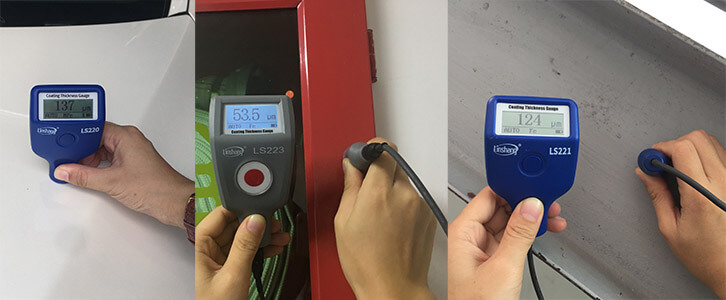Tips on Buying Coating Thickness Gauge
To buy a suitable coating thickness gauge, you need to know a lot. This article mainly introduces the measurement principle and application fields. In the automotive industry, coating thickness gauges are becoming more popular because they can help second-hand car dealers inspect paint film thickness. The coating thickness gauge can measure the paint thickness and there is also an instrument for measuring the gloss of car clothing-gloss meter.The gloss of a new car is usually better than that of an old car. Polishing cannot hide the effects of ultraviolet radiation and environmental conditions on automotive paint films.The coating thickness measured by the coating thickness gauge can tell whether the car has been repaired with sheet metal. The coating thickness tolerance value of the original varnish coating is indeed very strict. In the repainted areas, the film thickness varies greatly, as most of the old paint has been ground up and then refilled with new varnish. Also in the industrial sector, coating thickness gauges will become increasingly popular. Coating thickness gauges can also be used to measure coatings on ships' varnishes, bridge railings or steel structures. Most coating thickness gauges require calibration before use in order to maintain accuracy. During the research and development process of the Linshang coat coating thickness gauge, a large number of standard plates are used for calibration in order to make the operation easier. During the use of the instrument, no calibration is needed, just zero adjustment.
1. Measurement principle of coating thickness gauge
(1) Eddy current coating thickness gauge
Eddy current coating thickness gauges are used to measure non-conductive coatings on non-magnetic metals, such as varnishes. During the measurement process, the object under test generates eddy currents because the coil generates a changing magnetic field. The coating thickness will be determined by eddy currents going back to the coil.
(2) Magnetic induction coating thickness gauge
The electromagnetic induction method is used for the measurement of non-magnetic coatings such as coatings, varnishes, enamels, chromium and zinc plating on ferromagnetic metal substrates such as steel. During the measurement, a magnetic field is generated by the electromagnetic coil. The magnetic field changes as it approaches the magnetic substrate. The change of the magnetic field depends on the distance from the metal substrate to the detector, that is, the coating thickness.
The following are pictures of coating thickness gauges measuring different objects:
2. Linshang coating thickness gauge
Linshang coating thickness gaugeis a device for measuring the paint thickness (paint, varnish, iron, steel or non-ferrous metal) of the vehicle body by non-destructive measurement. When choosing a suitable coating thickness gauge, the very important point is the measuring range of the coating thickness gauge. Linshang coating thickness gauges can measure materials whose thickness are up to 5mm. The LS220 coating thickness gauge is suitable for testing the paint film thickness of a car paint to check whether the car has been severely damaged. It is the best choice for a used car appraiser. As an important tool for quality assurance of paint factory products, LS220H coating thickness gauge is the basic equipment of paint factory technicians. The instrument is well-suited for controlling product quality, even in the industrial sector. With very simple operation, the instrument can quickly identify high-precision measurement results. Linshang coating thickness gauge is suitable for the measurement of non-magnetic coatings such as coatings, varnishes, enamels, chrome, galvanizing on ferromagnetic metal substrates such as steel. Measurement of non-conductive coatings such as coatings, anodized layers or ceramics on metal substrates. Especially suitable for automotive paint coating thickness detection.
- High precision coating thickness gauge for used car
- Automotive paint protection films coating thickness gauge
- Plating Thickness Measuring Instrument for Detecting Anti-corrosion Coating
- Linshang LS220, LS191, LS160A– Necessary for Car Cover Inspection
- Coating Thickness Gauge for Second Hand Vehicle
- Zero Adjustment Step of Coating Thickness Gauge
